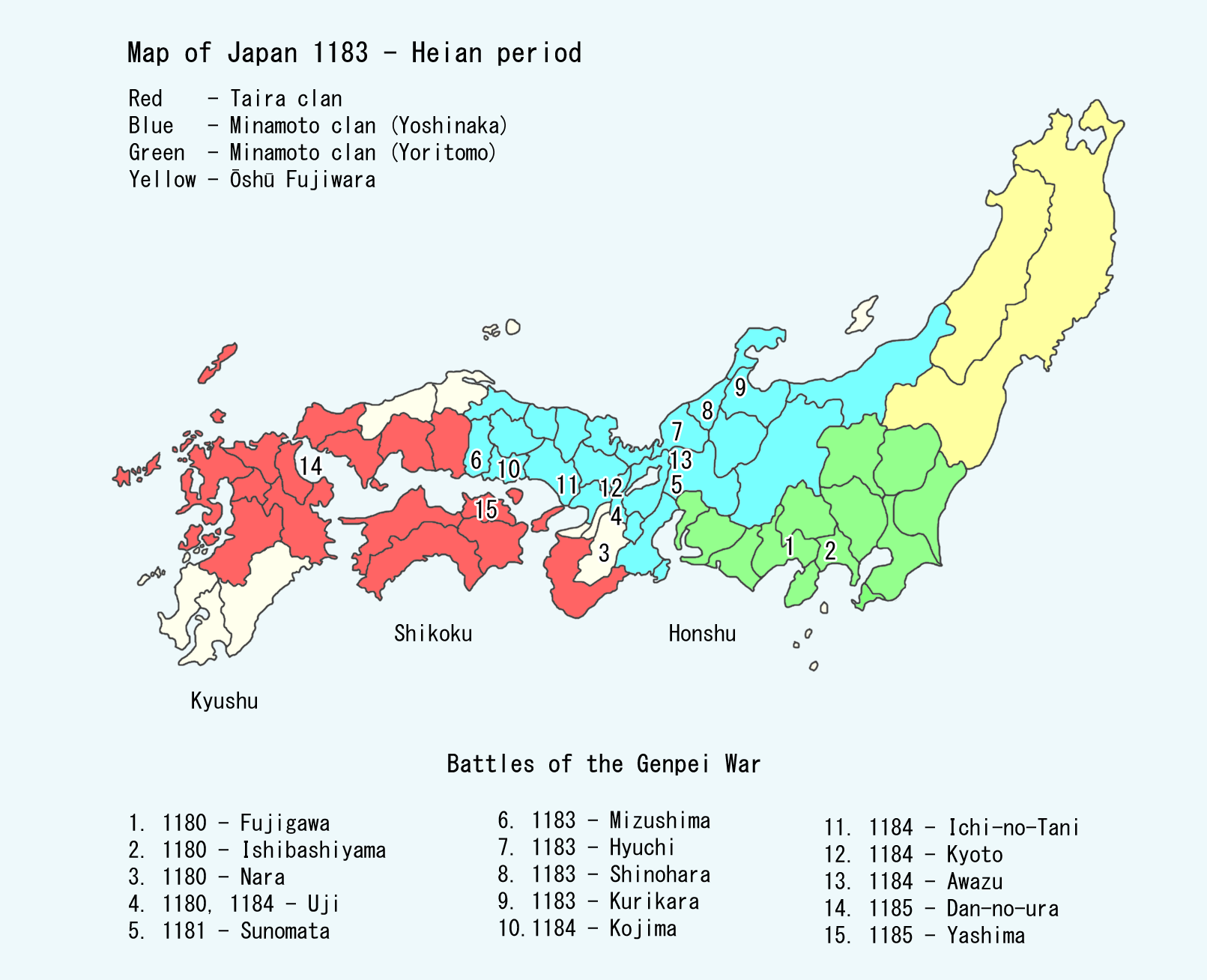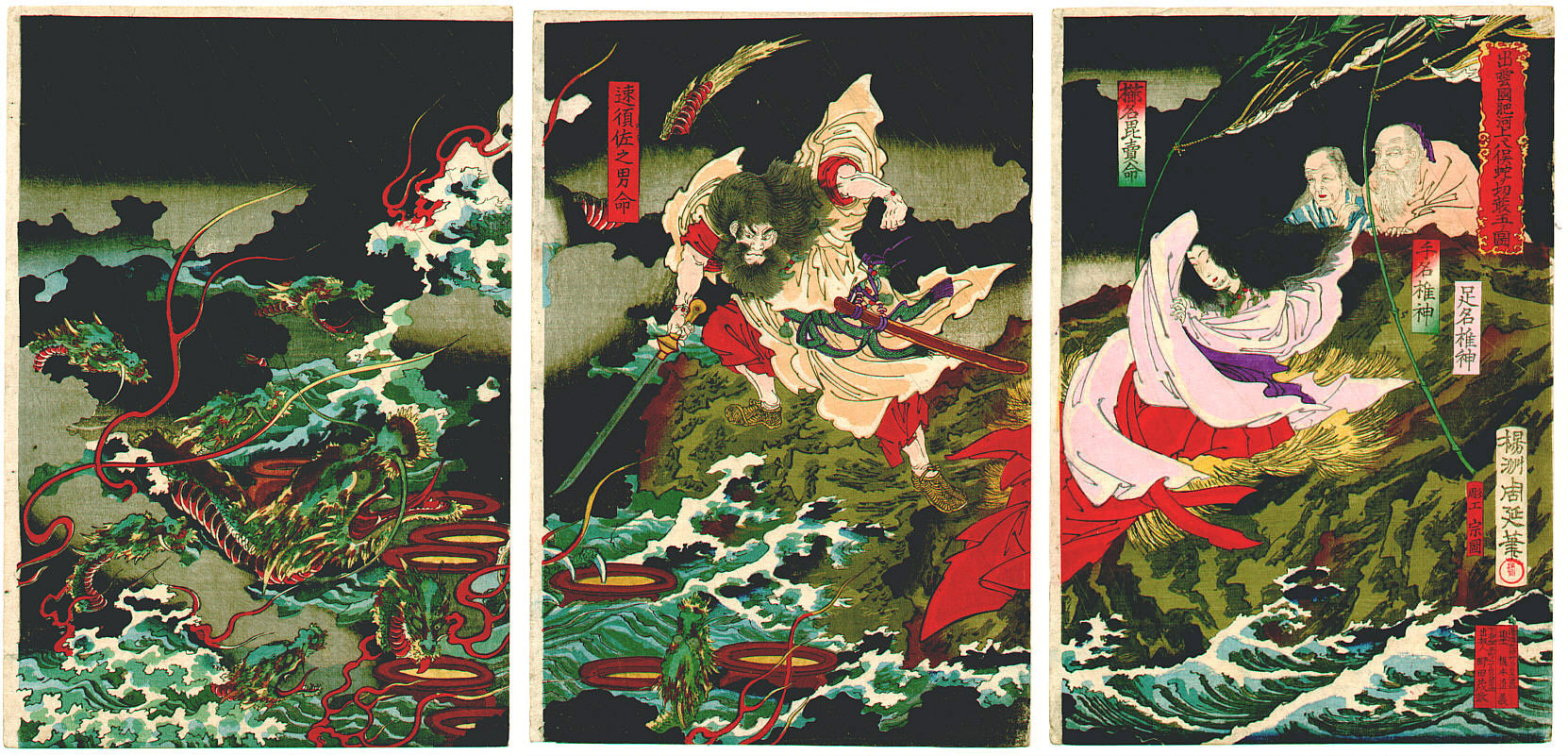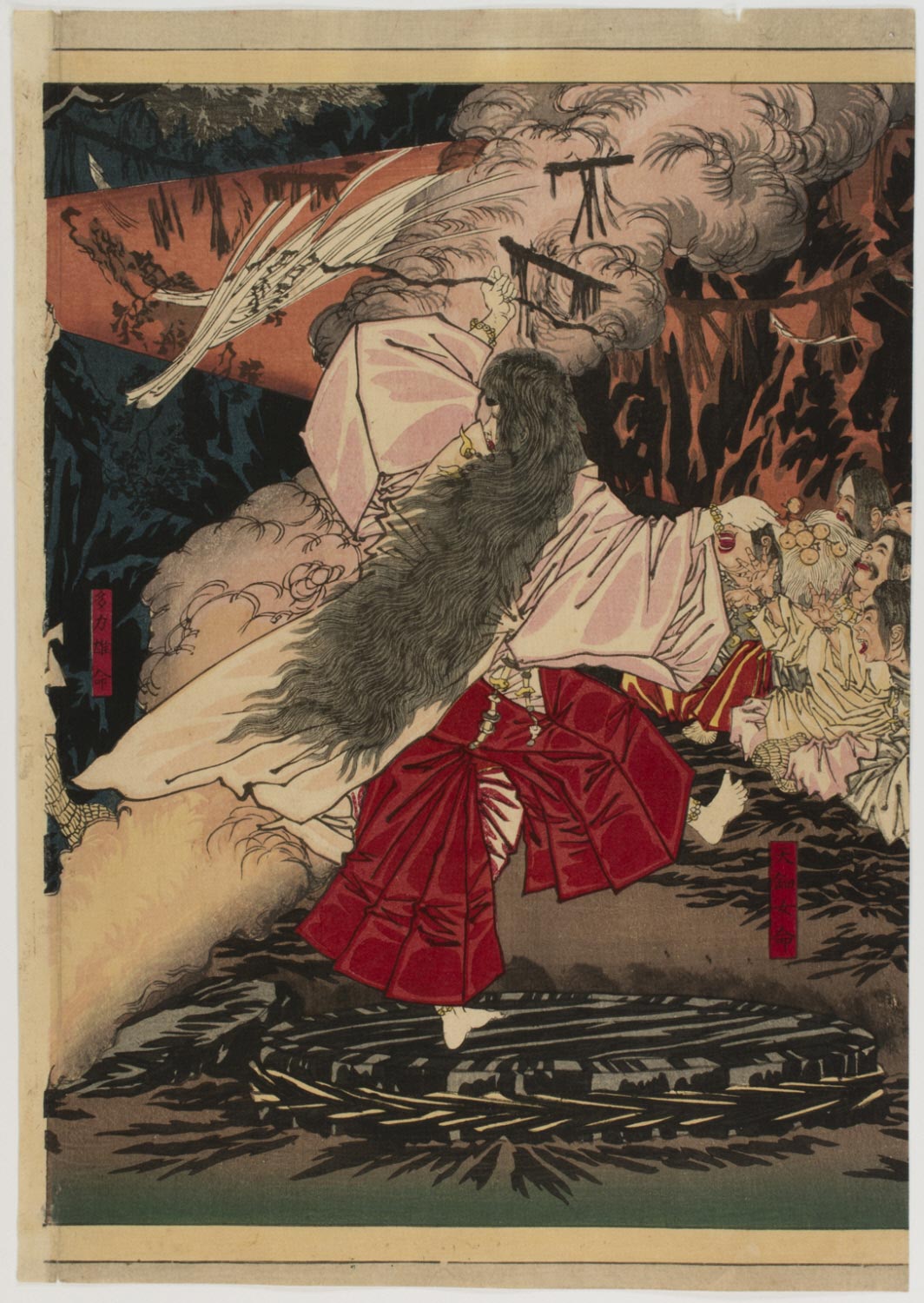|
Imperial Regalia Of Japan
The are the imperial regalia of Japan and consist of the sword , the mirror , and the jewel . They represent the three primary virtues: valour (the sword), wisdom (the mirror), and benevolence (the jewel).ミニ講話 宮司のいい話 (in Japanese). The actual historical status of these legendary treasures is unknown as they are intentionally kept from public view to symbolize authority. Representations of the regalia are used in masakaki in many rituals. [...More Info...] [...Related Items...] OR: [Wikipedia] [Google] [Baidu] |
Amaterasu
, often called Amaterasu () for short, also known as and , is the goddess of the sun in Japanese mythology. Often considered the chief deity (''kami'') of the Shinto pantheon, she is also portrayed in Japan's earliest literary texts, the () and the (720 CE), as the ruler (or one of the rulers) of the heavenly realm Takamagahara and as the mythical ancestress of the Imperial House of Japan via her grandson Ninigi. Along with two of her siblings (the moon deity Tsukuyomi and the impetuous storm-god Susanoo) she ranks as one of the "Three Precious Children" (, ), the three most important offspring of the creator god Izanagi. Amaterasu's chief place of worship, the Grand Shrine of Ise in Ise, Mie Prefecture, is one of Shinto's holiest sites and a major pilgrimage center and tourist spot. As with other Shinto ''kami'', she is also enshrined in a number of Shinto shrines throughout Japan. Name The goddess is referred to as ''Amaterasu Ōmikami'' ( / ; historical orthogr ... [...More Info...] [...Related Items...] OR: [Wikipedia] [Google] [Baidu] |
Atsuta Shrine
is a Shinto shrine, home to the sacred sword '' Kusanagi no Tsurugi'', one of the three Imperial Regalia of Japan—traditionally believed to have been established during the reign of Emperor Keikō (reigned 71–130 CE). It is located in Atsuta-ku, Nagoya, Aichi Prefecture in Japan. The shrine is familiarly known as ''Atsuta-Sama'' (Venerable Atsuta) or simply as ''Miya'' (the Shrine). Since ancient times, it has been especially revered, ranking with the Ise Shrine.Atsuta-jingū org: History [...More Info...] [...Related Items...] OR: [Wikipedia] [Google] [Baidu] |
Kanmon Straits
The or the Straits of Shimonoseki is the stretch of water separating Honshu and Kyushu, two of Japan's four main islands. On the Honshu side of the strait is Shimonoseki (, which contributed "Kan" () to the name of the strait) and on the Kyushu side is Kitakyushu, whose former city and present ward, Moji (), gave the strait its "mon" (). The straits silt up at the rate of about 15 centimetres per annum, and dredging has made it possible to build the Kitakyushu Airport at low cost. Western maps from the 19th century also refer to this waterway as the Straits of Van der Capellen.Taylor, Bayard. ''Japan, In Our Day''. New York: Scribner, Armstrong, and Co, 1872. Preface map. Population of Kanmon area The total population of the Kanmon area is about 1.3 million, counting the whole of Kitakyushu (approx. one million) and Shimonoseki (approx. 300,000), although detailed definitions vary widely (see Fukuoka–Kitakyushu). Tourism *Fireworks festival The Kanmon Straits Summ ... [...More Info...] [...Related Items...] OR: [Wikipedia] [Google] [Baidu] |
Battle Of Dan-no-ura
A battle is an occurrence of combat in warfare between opposing military units of any number or size. A war usually consists of multiple battles. In general, a battle is a military engagement that is well defined in duration, area, and force commitment. An engagement with only limited commitment between the forces and without decisive results is sometimes called a skirmish. The word "battle" can also be used infrequently to refer to an entire operational campaign, although this usage greatly diverges from its conventional or customary meaning. Generally, the word "battle" is used for such campaigns if referring to a protracted combat encounter in which either one or both of the combatants had the same methods, resources, and strategic objectives throughout the encounter. Some prominent examples of this would be the Battle of the Atlantic, Battle of Britain, and the Battle of France, all in World War II. Wars and military campaigns are guided by military strategy, whereas batt ... [...More Info...] [...Related Items...] OR: [Wikipedia] [Google] [Baidu] |
Minamoto Clan
was a Aristocracy (class), noble surname bestowed by the Emperors of Japan upon members of the Imperial House of Japan, imperial family who were excluded from the List of emperors of Japan, line of succession and demoted into the ranks of Nobility, the nobility since 814."...the Minamoto (1192-1333)". ''Warrior Rule in Japan'', page 11. Cambridge University Press. Several noble lines were bestowed the surname, the most notable of which was the Seiwa Genji, whose descendants established the Kamakura shogunate, Kamakura and Ashikaga shogunate, Ashikaga Shogun, shogunates following the Heian era. The Minamoto was one of the four great Japanese clans, clans that dominated Japanese politics during the Heian period, Heian period in History of Japan, Japanese history—the other three were the Fujiwara clan, Fujiwara, the Taira clan, Taira, and the Tachibana clan (kuge), Tachibana. In the late Heian period, Minamoto rivalry with the Taira culminated in the Genpei War (1180–1185 AD). T ... [...More Info...] [...Related Items...] OR: [Wikipedia] [Google] [Baidu] |
Taira Clan
The was one of the four most important Japanese clans, clans that dominated Japanese politics during the Heian period, Heian period of History of Japan, Japanese history – the others being the Minamoto clan, Minamoto, the Fujiwara clan, Fujiwara, and the Tachibana clan (kuge), Tachibana. The clan is divided into four major groups, named after the Emperor of Japan, emperors they descended from: Emperor Kanmu, Kanmu Heishi, Emperor Ninmyō, Ninmyō Heishi, Emperor Montoku, Montoku Heishi, and Emperor Kōkō, Kōkō Heishi, the most influential of which was the Kanmu Heishi line. In the twilight of the Heian period, the Taira controlled the boy emperor Emperor Antoku, Antoku (himself the grandson of the powerful ''Kugyō'' Taira no Kiyomori) and had effectively dominated the Imperial capital of Heian-kyō, Heian. However, they were opposed by their rivals the Minamoto clan (the Genji), which culminated in the Genpei War (1180–1185 AD). The five-year-long war concluded with a d ... [...More Info...] [...Related Items...] OR: [Wikipedia] [Google] [Baidu] |
Emperor Antoku
was the 81st emperor of Japan, according to the traditional order of succession. His reign spanned the years from 1180 through 1185. His death marked the end of the Heian period and the beginning of the Kamakura period. During this time, the Imperial family was involved in a bitter struggle between warring clans. Minamoto no Yoritomo with his cousin Minamoto no Yoshinaka, led a force from the Minamoto clan against the Taira, who controlled the emperor. During the climactic sea Battle of Dan-no-ura in April 1185, Antoku's grandmother Taira no Tokiko took him and plunged with him into the water in the Shimonoseki Straits, drowning the child emperor rather than allowing him to be captured by the opposing forces. This clash of clans led to numerous legends and tales. The story of Emperor Antoku and his mother's family became the subject of the Kamakura period epic poem ''The Tale of the Heike'' (Heike is an alternative reading of the Japanese characters for "House of the Taira"). ... [...More Info...] [...Related Items...] OR: [Wikipedia] [Google] [Baidu] |
Genpei War
The was a national civil war between the Taira clan, Taira and Minamoto clan, Minamoto clans during the late Heian period of Japan. It resulted in the downfall of the Taira and the establishment of the Kamakura shogunate under Minamoto no Yoritomo, who appointed himself as ''Shōgun'' in 1192, governing Japan as a military dictator from the eastern city of Kamakura. It followed a ''coup d'état'' by the Taira in 1179 with the removal of rivals from all government posts, and subsequently banishing them, and a call to arms against the Taira, led by the Minamoto in 1180. The ensuing Battle of Uji (1180), Battle of Uji took place just outside Kyoto, starting a five-year-long war, concluding with a decisive Minamoto victory in the naval Battle of Dan-no-ura. However, it has been pointed out that the Battle of Ōshū in 1189 was the last battle during this period of civil war, as it completed Yoritomo's nationwide domination through the annexation of Tōhoku region, Northeast Japan. ... [...More Info...] [...Related Items...] OR: [Wikipedia] [Google] [Baidu] |
Yamata No Orochi
Yamata no Orochi (ヤマタノオロチ, also written as 八岐大蛇, 八俣遠呂智 or 八俣遠呂知) is a legendary eight-headed and eight-tailed serpent that appears in Japanese mythology. Both the ''Kojiki'' and ''Nihon Shoki'' record the serpent as being slain by the god Susanoo-no-Mikoto, Susanoo, in order to rescue the goddess Kushinadahime, Kushinada-hime. It is also noted that the Kusanagi no Tsurugi, Kusanagi-no-Tsurugi, one of the Imperial Regalia of Japan, Three Sacred Treasures, was found within the serpent's tail. In local tradition, Yamata no Orochi was believed to have survived their encounter with Susanoo and fled to Mount Ibuki, where they were venerated as Ibuki Daimyōjin (伊吹大明神). Additionally, figures such as Emperor Antoku and the Longnü, Nāga Maiden have been identified as incarnations of Yamata no Orochi. Name The name ''Yamata no Orochi'' (八俣遠呂智 in the ''Kojiki'', 八岐大蛇 in the ''Nihon Shoki'') is variously translated as ... [...More Info...] [...Related Items...] OR: [Wikipedia] [Google] [Baidu] |
Ame-no-Uzume-no-Mikoto
is the goddess of Dawn goddess, dawn, mirth, meditation, revelry and the arts in the Shinto religion of Japan, and the wife of fellow-god Sarutahiko Ōkami. (-no-Mikoto is a common honorific appended to the names of Japanese gods; it may be understood as similar to the English honorific 'the Great'.) She famously helped draw out the missing sun deity, Amaterasu, Amaterasu Omikami, when she had hidden herself in a cave. Her name can also be pronounced as Ama-no-Uzume-no-Mikoto. She is also known as Ōmiyanome-no-Ōkami, an ''Inari Ōkami, inari kami'' possibly due to her relationship with her husband. She is also known as Ame-no-Uzume-no-Mikoto, The Great Persuader, and The Heavenly Alarming Female. She is depicted in kyōgen farce as Okame, a woman who revels in her sensuality. Mythology Amaterasu and the cave Amaterasu's brother, the storm god Susanoo-no-Mikoto, Susano'o, had vandalized her rice fields, threw a flayed horse at her loom, and brutally killed one of her maiden ... [...More Info...] [...Related Items...] OR: [Wikipedia] [Google] [Baidu] |
Susanoo-no-Mikoto
__FORCETOC__ Susanoo (, ; Historical kana orthography, historical orthography: , ), often referred to by the honorific title Susanoo-no-Mikoto (), is a in Japanese mythology. The younger brother of Amaterasu, goddess of the sun and mythical ancestress of the Imperial House of Japan, Japanese imperial line, he is a multifaceted deity with contradictory characteristics (both good and bad), being portrayed in various stories either as a wild, impetuous god associated with the sea and storms, as a heroic figure who killed a monstrous serpent, or as a local deity linked with the harvest and agriculture. Shinbutsu shūgō, Syncretic beliefs of the Gion cult that arose after Buddhism in Japan, the introduction of Buddhism to Japan also saw Susanoo becoming conflated with deities of pestilence and disease. Susanoo, alongside Amaterasu and the earthly Ōkuninushi (also Ōnamuchi) – depicted as either Susanoo's son or scion depending on the source – is one of the central deities of ... [...More Info...] [...Related Items...] OR: [Wikipedia] [Google] [Baidu] |








